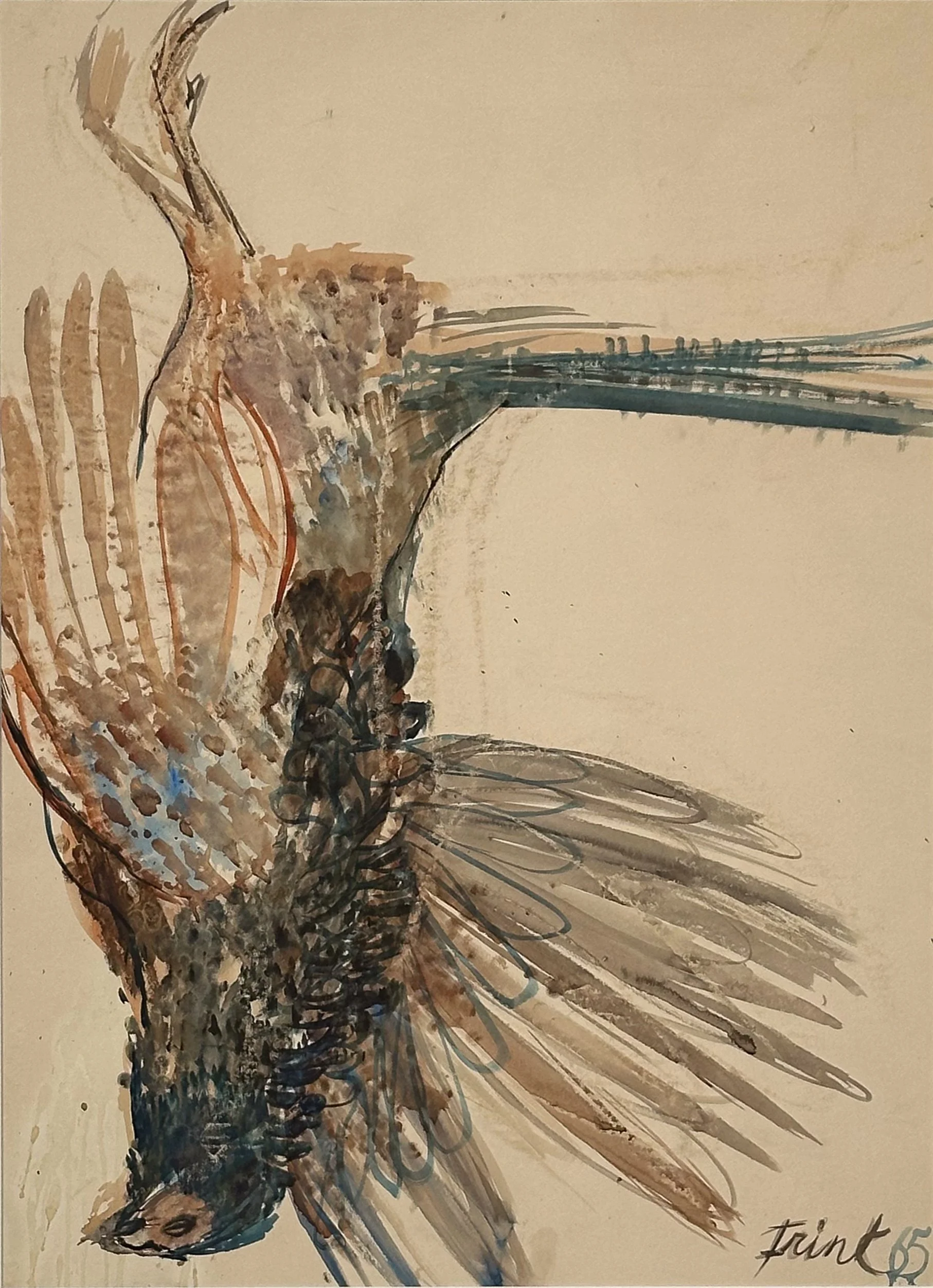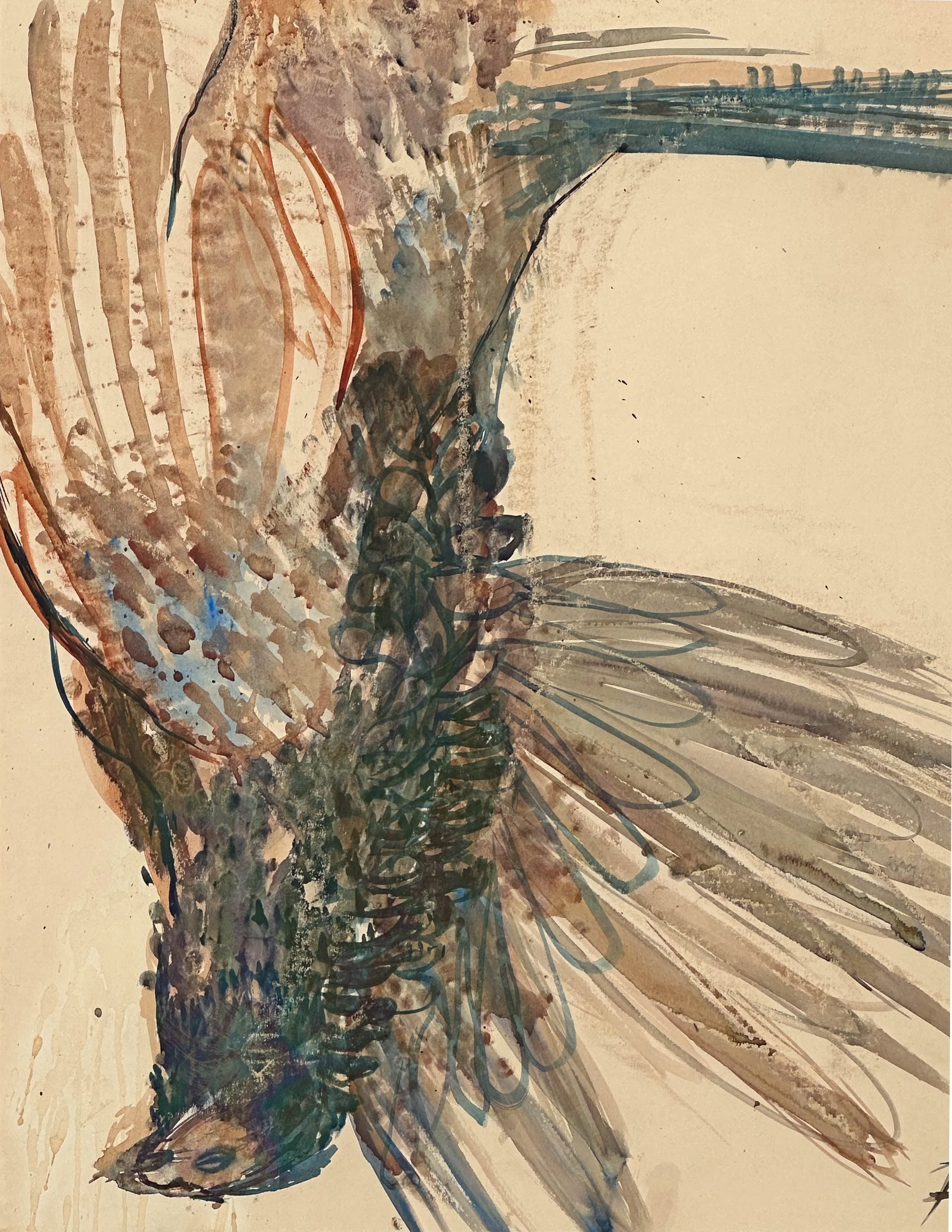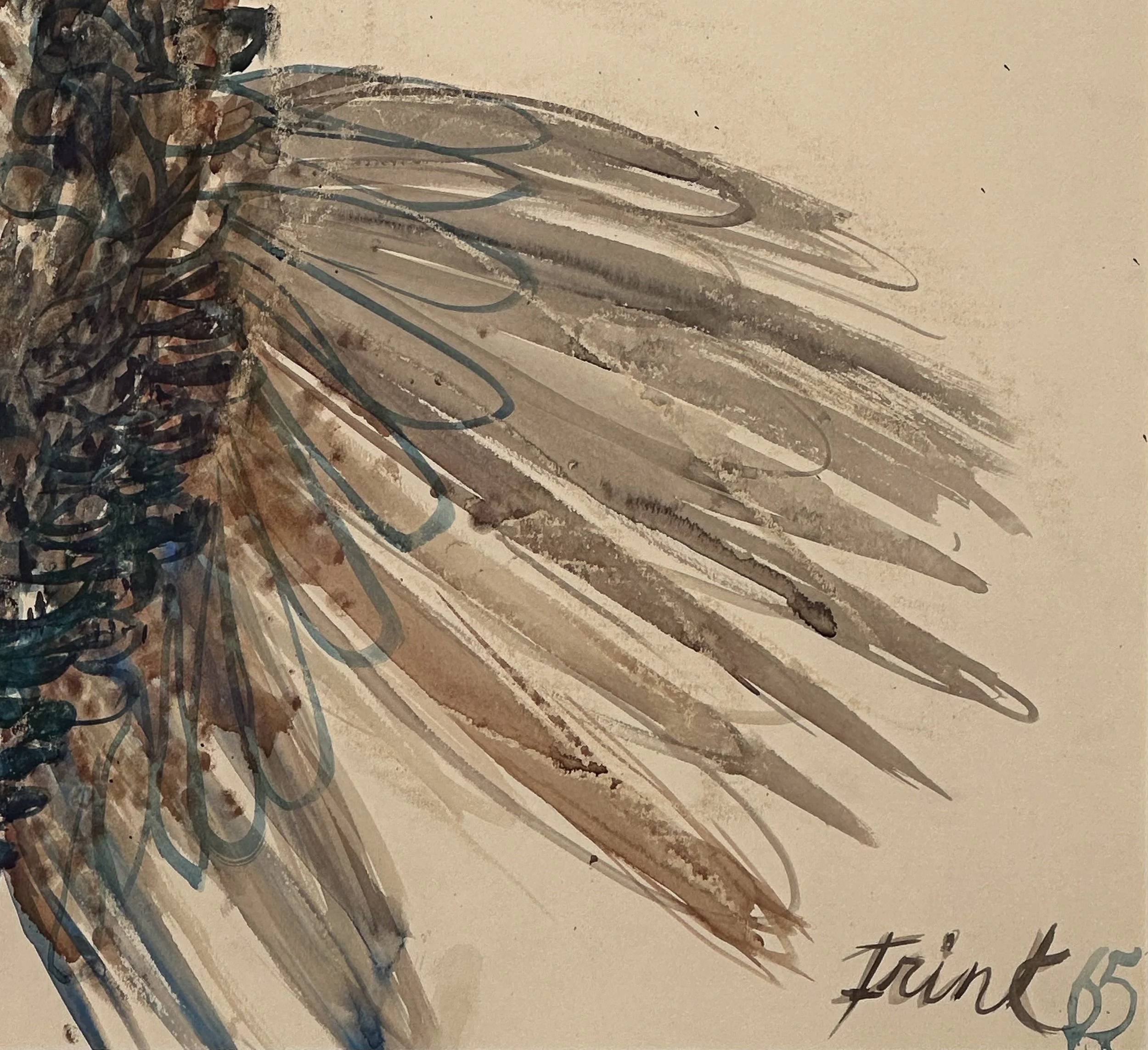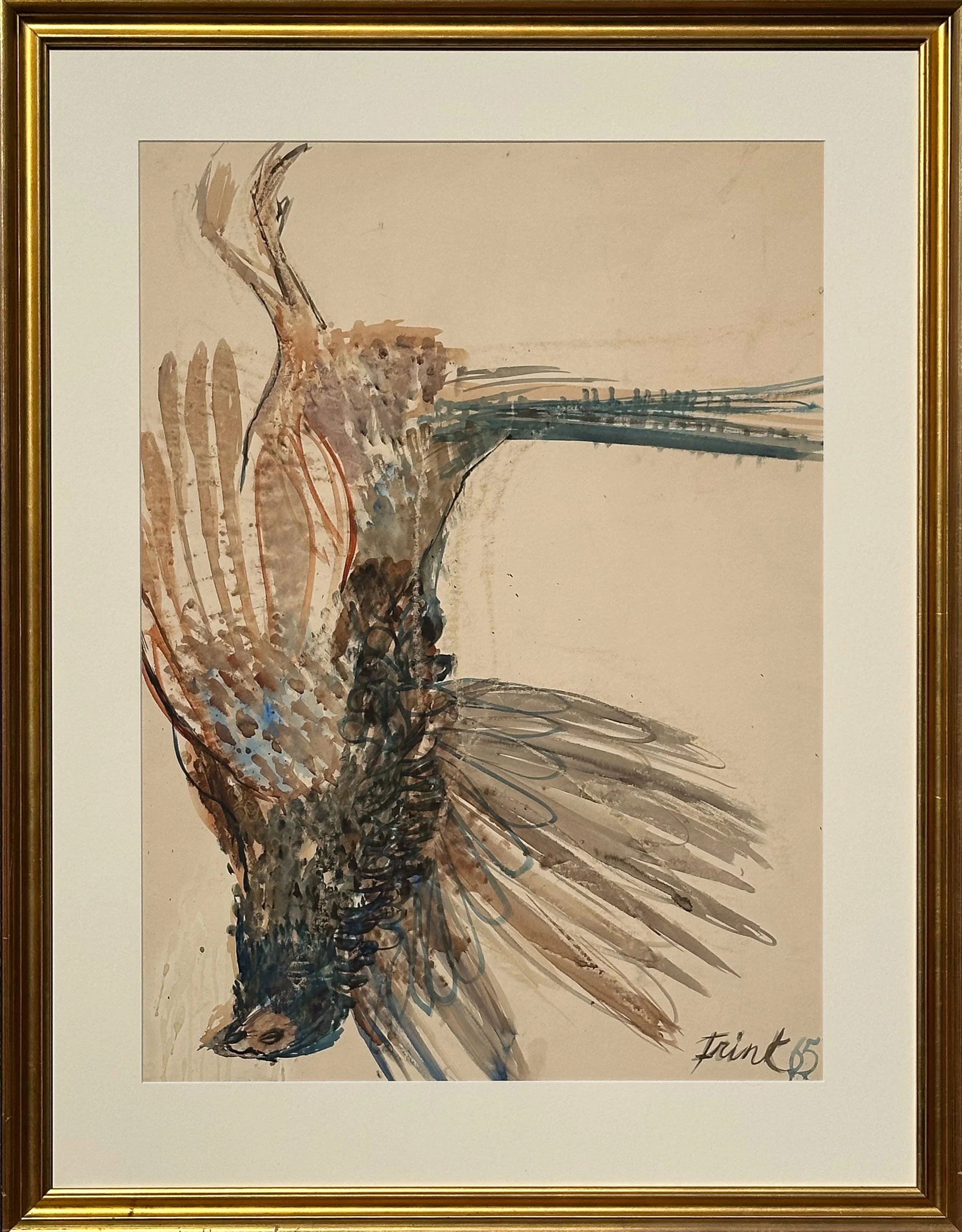




Artist: Dame Elisabeth Frink, D.B.E, R.A. (1930-1993)
Title: Dead Cock Pheasant 65
Medium: Watercolour on Paper under Glass
Signed & Dated 65, lower right
Provenance | A unique piece of art from Dame Elisabeth Frink. Painted in 1965 and displaying a Pheasant with full plumage. The painting passed through Sotheby’s on the Wednesday 11th October 1989 (Lot 326) and this painting will be sold with a hard copy of that Sotheby’s catalogue. The painting was with Manya Igle Fine Arts, London, where it was purchased by the previous owner.
Dimensions visible without frame: 74cm x 54cm
Dimensions with frame: 98cm x 76.5cm
Framed and ready to hang
4% Artists Resale Rights (ARR) will be applied at the checkout.
Artist: Dame Elisabeth Frink, D.B.E, R.A. (1930-1993)
Title: Dead Cock Pheasant 65
Medium: Watercolour on Paper under Glass
Signed & Dated 65, lower right
Provenance | A unique piece of art from Dame Elisabeth Frink. Painted in 1965 and displaying a Pheasant with full plumage. The painting passed through Sotheby’s on the Wednesday 11th October 1989 (Lot 326) and this painting will be sold with a hard copy of that Sotheby’s catalogue. The painting was with Manya Igle Fine Arts, London, where it was purchased by the previous owner.
Dimensions visible without frame: 74cm x 54cm
Dimensions with frame: 98cm x 76.5cm
Framed and ready to hang
4% Artists Resale Rights (ARR) will be applied at the checkout.